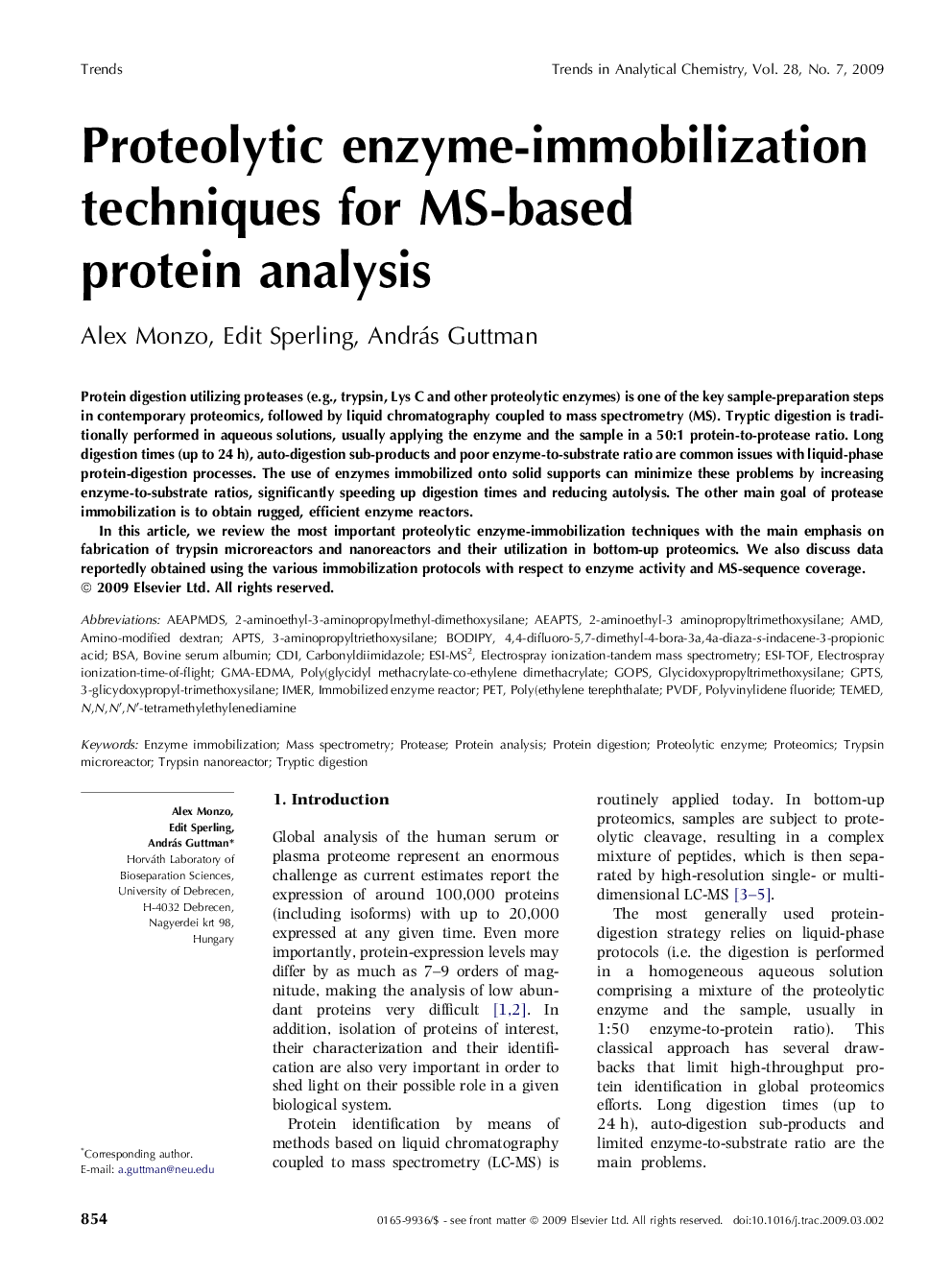| Article ID | Journal | Published Year | Pages | File Type |
|---|---|---|---|---|
| 1249373 | TrAC Trends in Analytical Chemistry | 2009 | 11 Pages |
Protein digestion utilizing proteases (e.g., trypsin, Lys C and other proteolytic enzymes) is one of the key sample-preparation steps in contemporary proteomics, followed by liquid chromatography coupled to mass spectrometry (MS). Tryptic digestion is traditionally performed in aqueous solutions, usually applying the enzyme and the sample in a 50:1 protein-to-protease ratio. Long digestion times (up to 24 h), auto-digestion sub-products and poor enzyme-to-substrate ratio are common issues with liquid-phase protein-digestion processes. The use of enzymes immobilized onto solid supports can minimize these problems by increasing enzyme-to-substrate ratios, significantly speeding up digestion times and reducing autolysis. The other main goal of protease immobilization is to obtain rugged, efficient enzyme reactors.In this article, we review the most important proteolytic enzyme-immobilization techniques with the main emphasis on fabrication of trypsin microreactors and nanoreactors and their utilization in bottom-up proteomics. We also discuss data reportedly obtained using the various immobilization protocols with respect to enzyme activity and MS-sequence coverage.
